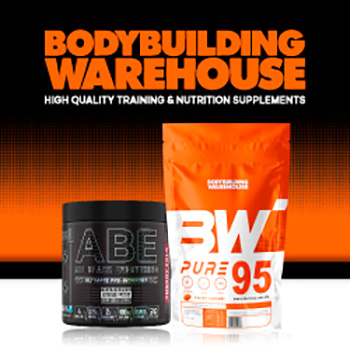
Main Points
- Weight loss injections, like GLP-1 medications, work best when combined with a structured diet plan that prioritizes protein and nutrient dense foods.
- Smaller, more frequent meals can help manage a reduced appetite and common side effects like nausea, which often accompany weight loss injections.
- Strategic carbohydrate intake, focusing on high fibre options, can increase satiety and prevent blood sugar fluctuations during your weight loss journey.
- Maintaining proper hydration and electrolyte balance is essential for minimizing side effects and maximizing the results from weight loss injections.
- A personalized approach to nutrition, which adapts as your body responds to treatment, leads to more sustainable weight loss results.
Weight loss injections have transformed the treatment of obesity. However, the diet you follow alongside them can make or break your results. Finding the right nutritional approach isn’t just helpful; it’s essential for maximizing effectiveness while minimizing side effects. At NutriHealth Solutions, we’ve helped thousands navigate their weight loss journey with specialized nutrition plans. These plans complement medical interventions.
Having the correct diet plan does not just help your weight loss injection. It changes your entire experience. Many patients suffer from side effects or reach a plateau early. This is because they have not changed their eating habits to work with their medication. The good news is that if you make strategic nutritional adjustments, you can improve your results. You will also feel better throughout the process.
How to Create the Perfect Diet Plan for Weight Loss Injection Success
When it comes to weight loss injections, it’s not enough to just eat less. You need to take a smart approach. This approach takes into account how these medications alter your body’s reaction to food. The best diet plan will give you the nutrients you need while also enhancing the appetite-suppressing and blood sugar controlling effects of your medication. This isn’t about limiting yourself; it’s about making the most of what you eat.
How Weight Loss Injections Work
GLP-1 receptor agonist injections such as semaglutide work by altering the way your body processes food. They slow down the rate at which your stomach empties, which means you feel fuller for longer. They also help to regulate your blood sugar levels by increasing the amount of insulin your body produces and reducing the amount of glucagon. This helps to prevent sudden increases and decreases in blood sugar levels, which can make you feel hungry.
Apart from these functions, these injections can actually modify the brain signals associated with hunger and the reward pathways of food. This neurological effect lessens the desire for food and reduces the pleasure response to highly palatable foods. As a result, it becomes simpler to select healthier alternatives. Understanding these physiological changes can help explain why your dietary needs change significantly when you start injection therapy.
Why Injections Don’t Work Well with Traditional Diets
Traditional diets that focus on counting calories often don’t work well with weight loss injections. The injections can suppress your appetite so much that you end up not eating enough. This can lead to dangerously low calorie intake if you’re just “eating when you’re hungry.” Such a situation can cause muscle loss, nutritional deficiencies, and metabolic changes that can stop your progress.
Traditional meal patterns three large meals daily often trigger or exacerbate gastrointestinal side effects like nausea and vomiting. Many patients make the mistake of trying to stick to their old eating habits, just in smaller amounts. However, this approach overlooks the fundamental changes in digestion and appetite control that these drugs cause.
How to Eat to Get the Most Out of Your Weight Loss Injections
Every weight loss injection diet plan that actually works is built on a few basic nutritional rules. These aren’t just ideas that sound good on paper, they’re proven strategies. These strategies have helped thousands of patients get real results from these medications. Follow these rules to give your medication the best chance of working, while also keeping your muscles strong and your metabolism healthy.
Protein Needs: More Than You Might Expect
Protein is especially vital when you’re losing weight with injection therapy. Most people need much more protein than they think usually 1.2-1.8g per kilogram of ideal body weight. This increased protein consumption plays several key roles during your weight loss process.
Firstly, eating enough protein helps keep your muscle mass intact during rapid weight loss. This can prevent your metabolism from slowing down. Protein also helps you feel full on fewer calories. This is because it provides more satiety per calorie than other macronutrients. Lastly, protein has a higher thermic effect of food (TEF). This means your body burns more calories digesting protein than it does digesting carbs or fats.
Lean meats like chicken breast and turkey, fish (especially fatty varieties like salmon), egg whites, Greek yogurt, cottage cheese, and plant based options such as tofu, tempeh, and legumes are all high quality protein sources that you should prioritize. If you’re having trouble with your appetite, liquid protein options like high quality protein shakes can be a big help.
Smart Carb Choices
Despite what you may have heard, carbs aren’t the bad guys when it comes to weight loss injections. The trick is knowing which types to eat and how much. Complex carbs that are high in fibre give you the energy you need. They also support gut health, an important factor to consider as your digestion changes during treatment.
Concentrate on low glycaemic carbs such as veggies, berries, legumes, and whole grains like quinoa and steel cut oats. These foods slowly release glucose into your bloodstream. This helps prevent blood sugar swings that can interfere with the effectiveness of the medication. Aim for 2-3 servings of these high-quality carbs per day. Keep individual servings to about ¼-½ cup cooked.
Healthy Fats That Support Hormone Function
While reducing the total amount of fat in your diet can help decrease the likelihood of gastrointestinal side effects, completely cutting out healthy fats may have the opposite effect. Some fats are necessary for hormone production, nutrient absorption, and cell function. GLP-1 medications already have an effect on hormone pathways. Therefore, it is even more important to consume the right amount of fat.
Include a moderate amount of omega-3 fatty foods in your diet, such as salmon, walnuts, flaxseeds, and olive oil. These fats are beneficial for brain health, reducing inflammation, and improving insulin sensitivity. All of these are important for successful weight management. A tablespoon of olive oil on vegetables or a quarter of an avocado with your meal will provide enough fat. This supports these functions without overburdening your digestive system.
Essential Micronutrients for Weight Loss
When you’re losing weight rapidly and eating less, you’re at a higher risk of not getting enough essential micronutrients. Make sure you’re getting enough of the nutrients that are often lacking when you’re losing weight: vitamin D, B vitamins, iron, magnesium, potassium, and calcium. Eating a wide variety of fruits and vegetables can help you get these nutrients. However, you might also need to take supplements.
During this transitional period, a top notch multivitamin acts as a safety net for nutrition. Consider supplementing with additional vitamin D (2000-5000 IU daily) and vitamin B12, particularly if you’re feeling tired. Blood tests every 3-6 months can pinpoint any specific deficiencies that need targeted treatment.






